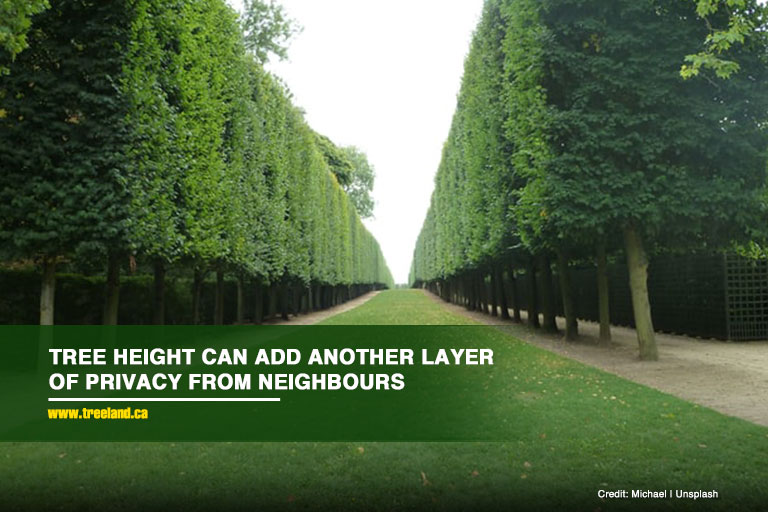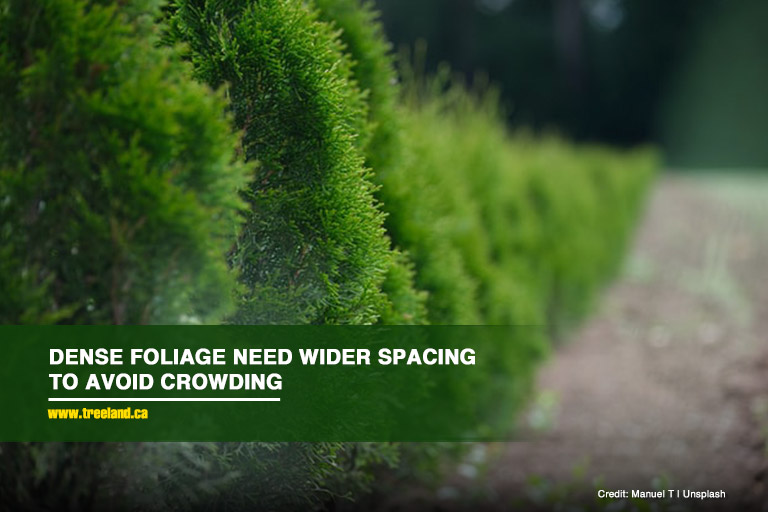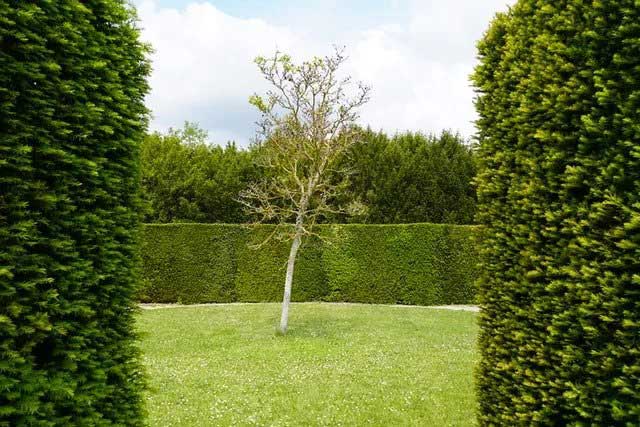Most homeowners value their seclusion from their neighbours and street traffic. Even if you get along well with your neighbours, you may not appreciate them staring down at you from their balcony while you’re lounging in your garden. Having privacy is a necessity, and it may also be beneficial in terms of maintaining the safety for your property.
Creating a sanctuary in your home by planting trees as screens or barriers is not only aesthetically pleasing but environmentally friendly. Privacy trees can provide protection from the elements, such as wind, noise, and curious passers-by, as well as hide undesirable aspects in your yard.
What Are Privacy Trees?
Although some types of trees perform better than others, privacy trees aren’t specific to a species of tree. Instead, they can be any tree placed closely together to form a screen and a barrier, shielding you from prying eyes. They also work in reverse and can be used to cover you from an unwanted sight.
A few of the best trees for planting for privacy includes:
- Leylan Cypress
- Thundercloud Plum
- Thuja Green Giant
- Emerald Green Arborvitae
- Nellie Stevens Holly
- Willow
Process of Planting Privacy Trees
Planting privacy trees in the landscape has various benefits, apart from security and silence. To take full advantage of these, there are a few key aspects you should consider while planting them.
- Choose the Right Tree
The first step is deciding which tree or shrub or a combination of both is best for you. Remember that tree fences also offer beauty to your landscape design, so you may also want to take that into account.
When buying, keep an eye on the growth pace. While you’re waiting for your plants to grow, consider planting taller perennials, grasses, shrub, or flowers to fill in the gaps between them. You can move the temporary plants to another spot as the permanent hedge begins to fill in. To ensure full coverage, plant in layers or stagger the plantings. You could always purchase a fully grown plant.
There is also the debate between evergreens and deciduous trees?
Evergreens will keep their leaves and colour throughout the year. They don’t need raking or other sorts of autumn upkeep, and they naturally grow in an upright conical form with minimum trimming.
Deciduous trees, on the other hand, may make a striking statement because they are attractive and change with the seasons. Unfortunately, in the autumn, these lovely leaves will fall, leaving you with bare limbs and no privacy screen by winter.
- Consider Growth Rate
Fast-growing trees and shrubs can help solve a privacy issue quickly, but there are some drawbacks. Because of they develop quickly, they may have weaker root and branch strength, making them more vulnerable to wind and storms.
The Canada Plant Hardiness Zone you live in will have a big impact on your plant choices and growth rates. Plant growth rates vary depending on the type of plant, the growing environment, and the quality of plant care supplied.
- Consider Tree Height

Another key aspect of planting trees for privacy from neighbours is determining the correct tree height. Visualize how high you want your fence to be or how much you want to cover. Green Giant Arborvitae and American Arborvitae, for example, are good choices for a tall, evergreen fence. They can reach a height of 60 feet and 40 to 60 feet respectively. If not trees, there are shrubs to choose from. Nigra Arborvitae, which can reach up to 30 feet, and Emerald Arborvitae, 15 feet, are excellent choices for evergreen shrubs.
- Choose Location
Determine whether the location is in the sun or the shade, as well as the type of soil and water supply. Before you start, make a note of the property lines. If at all feasible, talk to your neighbour about the project first. If you plan on planting near the street, make sure to verify local rules.
When you only have a small amount of space to work with, planting alongside roads or sidewalks might be difficult. Trees may prove to be difficult to cultivate and cause problems in the future. Because tree roots spread outwards in search of water, they may develop beneath the pavement. If roots do grow, they may push the pavement up, resulting in uneven and fractured patches.
- Check Available Space
It’s crucial to remember that the heights and widths of privacy trees and shrubs differ considerably, so make sure you measure your available space. Determine how much space you have to work with first. Then consider how much of that room you’re willing to give up for your privacy barrier.
The amount of rows and types of trees you will need depends on how much width you have available. If you have a lot of room, you may want to double or triple the rows.
- Determine Rows and Spacing

The number of rows you plant will depend on the amount of space you have and how dense you want your screen to be. The space between each tree is determined by the tree’s spread. Planting at least 12 to 24 feet away from the tree’s centre is a decent rule of thumb to prevent root crowding. Depending on the type, many evergreen trees can be spaced anywhere from 6 to 12 feet apart. Arborvitae can be grown as close as 3 feet apart.
- Prepare Planting Area

The next step is to designate the placement of your trees.
Make a straight line by burying them at both ends and tying a thread between them.
Next, use a marker, such as a sprinkler flag or a wooden stake, to mark where your trees should go based on your desired rows and spacing. Dig a hole that is double the width and depth of your tree’s root ball. Place the tree in the hole, cover it with a mixture of soil, compost and manure, and pack it down firmly.
After you’ve planted your privacy trees, it’s best to let them grow organically, care for them regularly and prune them properly.
- Maintain Hedge
Your trees (or shrubs) will require a few growing seasons to establish themselves. After which, you can trim the top and sides as needed throughout the year to keep your preferred height and look. Some trees have a higher level of sensitivity than others. Some trees can withstand almost anything thrown at them, while others are extremely delicate. Regular maintenance of evergreen hedges is necessary.
When Is the Best Time to Plant Privacy Trees?
The best time to plant your trees is when it’s cool outside. This could be in the day when the heat has subsided a little, or in the evening when the temperatures have dropped. If this isn’t feasible, the next best option is to plant your trees when the weather is humid. If you’ve purchased your trees but want to wait a day or two before planting them, keep them in a cool, dark spot to keep them from wilting in the heat.
If you plan to plant privacy trees for your backyard, come to Caledon Treeland. We offer an array of tree for privacy in Mississauga and the rest of Greater Toronto Area. Call us at (905) 880-1828.


